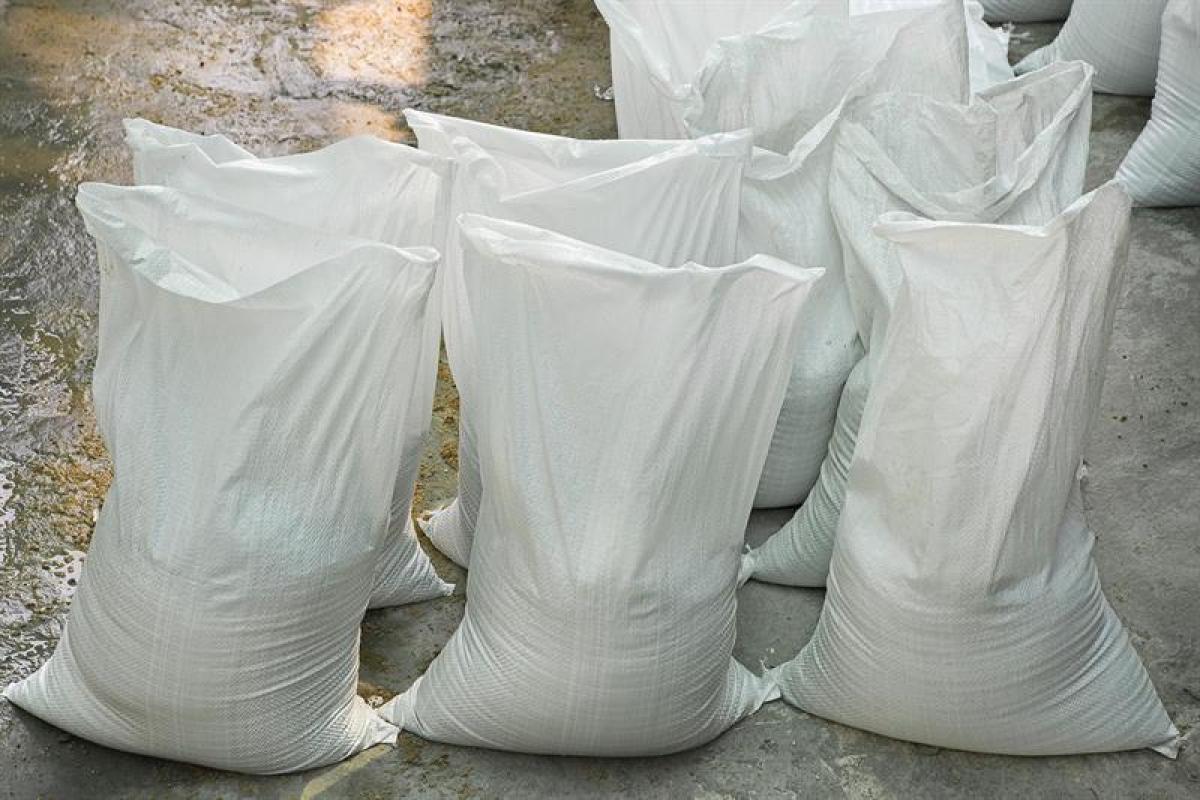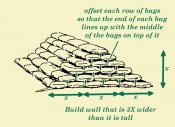Sandbagging 101

***Sandbags and sand are available for Polk County residents at the Polk County Public Works Yard (820 SW Ash). At times there may be prefilled bags, but come expecting to fill the bags yourself and while there are a couple shovels, in a high usage time you may need to bring your own shovel.***
Sandbagging 101:
The use of sandbags is a simple, but effective way to prevent or reduce the impact of flooding. Sandbags do not stop the water completely but can reduce the amount of water entering your property. Properly filled and placed sandbags can act as a barrier to divert moving water around, instead of through, buildings.
Untied sandbags are recommended for most situations.
Types of Bags:
The most commonly used bags are untreated burlap sacks. Empty bags can be stockpiled for emergency use, and will be serviceable for several years, if properly stored. Filled bags of earth material will deteriorate quickly.
Commercial plastic sandbags, made from polypropylene, are also available from most bag suppliers. These will store for a long time with minimum care, but are not biodegradable.
Do not use garbage bags, as they are too slick to stack. Do not use feed sacks, as they are too large to handle. Use bags about 14-18" wide, and 30-36" deep.
Coarse sand could leak out through the weave in the bag; to prevent this, double bag the material.
Sandbag barriers can easily be constructed by two people, as most individuals have the physical capability to carry or drag a sandbag weighing approximately 30 pounds.
Where to Purchase
Burlap sacks are available at feed or hardware stores. All cities in Polk County have sandbagging locations with sand and bags; however they are not open 24/7. Residents check local City or County websites for sandbag locations. Polk County's location is 820 SW Ash Street in Dallas at the Public Works Shops. There are some bags located in the small shed next to the sand pile if you do not have your own.
How to Fill a Sandbag
Bags should be filled between one-third (1/3) to one-half (1/2) of their capacity. This keeps the bag from getting too heavy, and permits the bags to be stacked with a good seal.
Use the following table to estimate the number of bags required:
| Height above levee | Bags/100 feet |
| 1 foot | 800 |
| 2 feet | 2,000 |
| 3 feet | 3,400 |
Special Note:
Sandbags can be stored, flat, unfilled, in a dry area that is away from sunlight to prevent damage to the bags.

Sandbag Placement
Place the partially filled bags lengthwise and parallel to the direction of flow, with the open end facing against the water flow. Tuck the flaps under, keeping the unfilled portion under the weight of the sack.
Stagger the joint connections when multiple layers are necessary. For unsupported layers over three (3) courses high, use the pyramid placement method.

